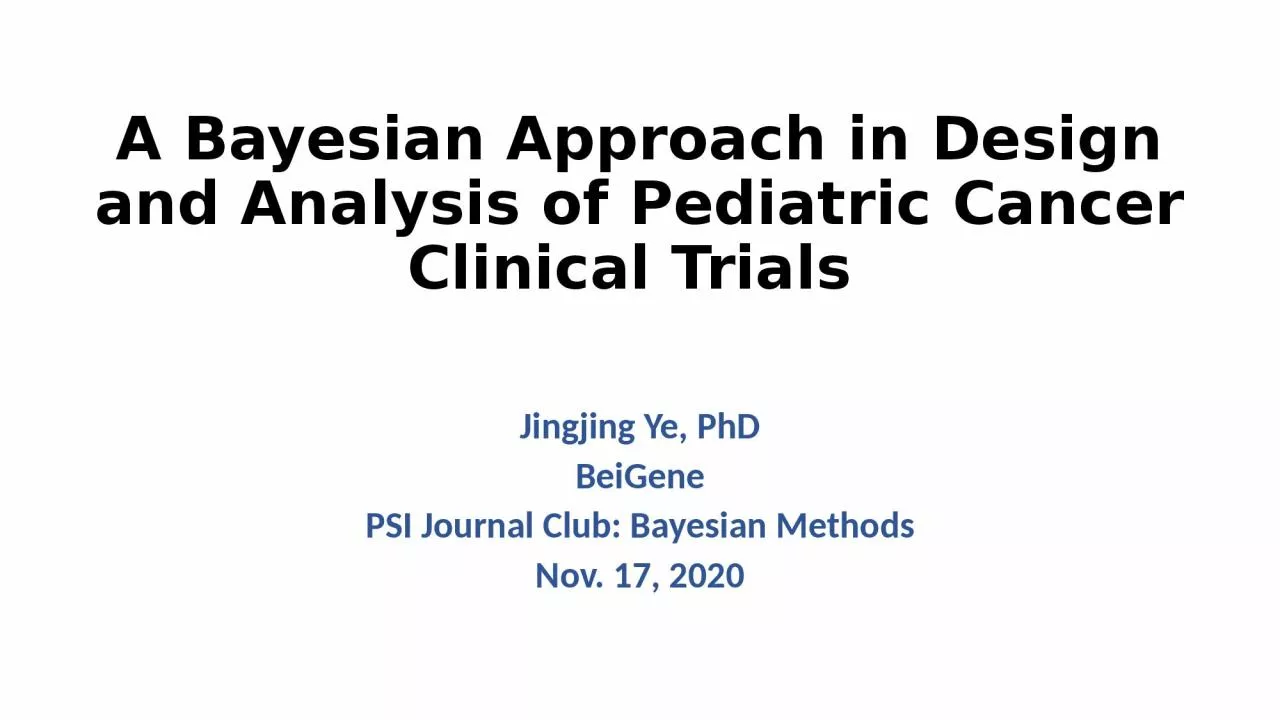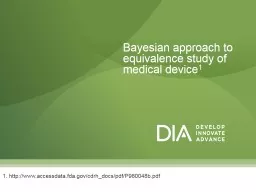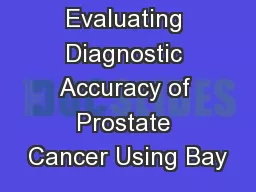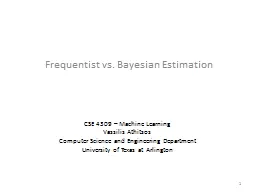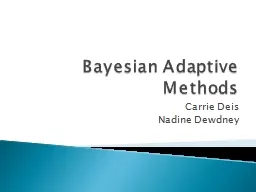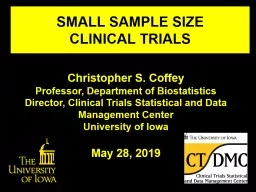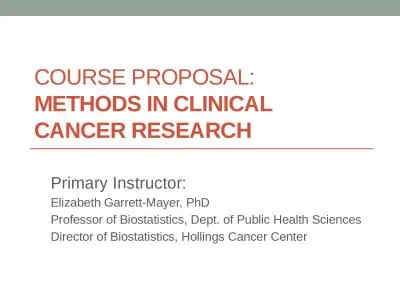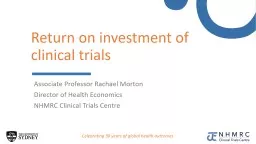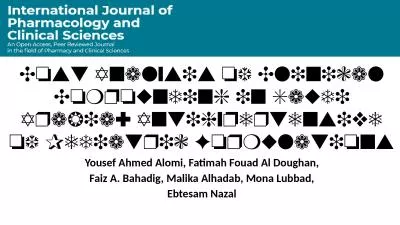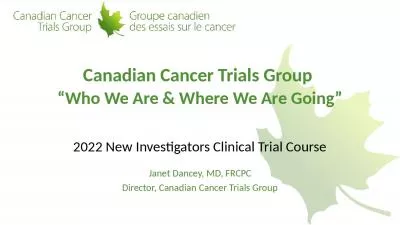PPT-A Bayesian Approach in Design and Analysis of Pediatric Cancer Clinical Trials
Author : adah | Published Date : 2023-11-17
Jingjing Ye PhD BeiGene PSI Journal Club Bayesian Methods Nov 17 2020 Outline Background Using a case study to illustrate potential useful Bayesian analysis Analysis
Presentation Embed Code
Download Presentation
Download Presentation The PPT/PDF document "A Bayesian Approach in Design and Analys..." is the property of its rightful owner. Permission is granted to download and print the materials on this website for personal, non-commercial use only, and to display it on your personal computer provided you do not modify the materials and that you retain all copyright notices contained in the materials. By downloading content from our website, you accept the terms of this agreement.
A Bayesian Approach in Design and Analysis of Pediatric Cancer Clinical Trials: Transcript
Download Rules Of Document
"A Bayesian Approach in Design and Analysis of Pediatric Cancer Clinical Trials"The content belongs to its owner. You may download and print it for personal use, without modification, and keep all copyright notices. By downloading, you agree to these terms.
Related Documents

